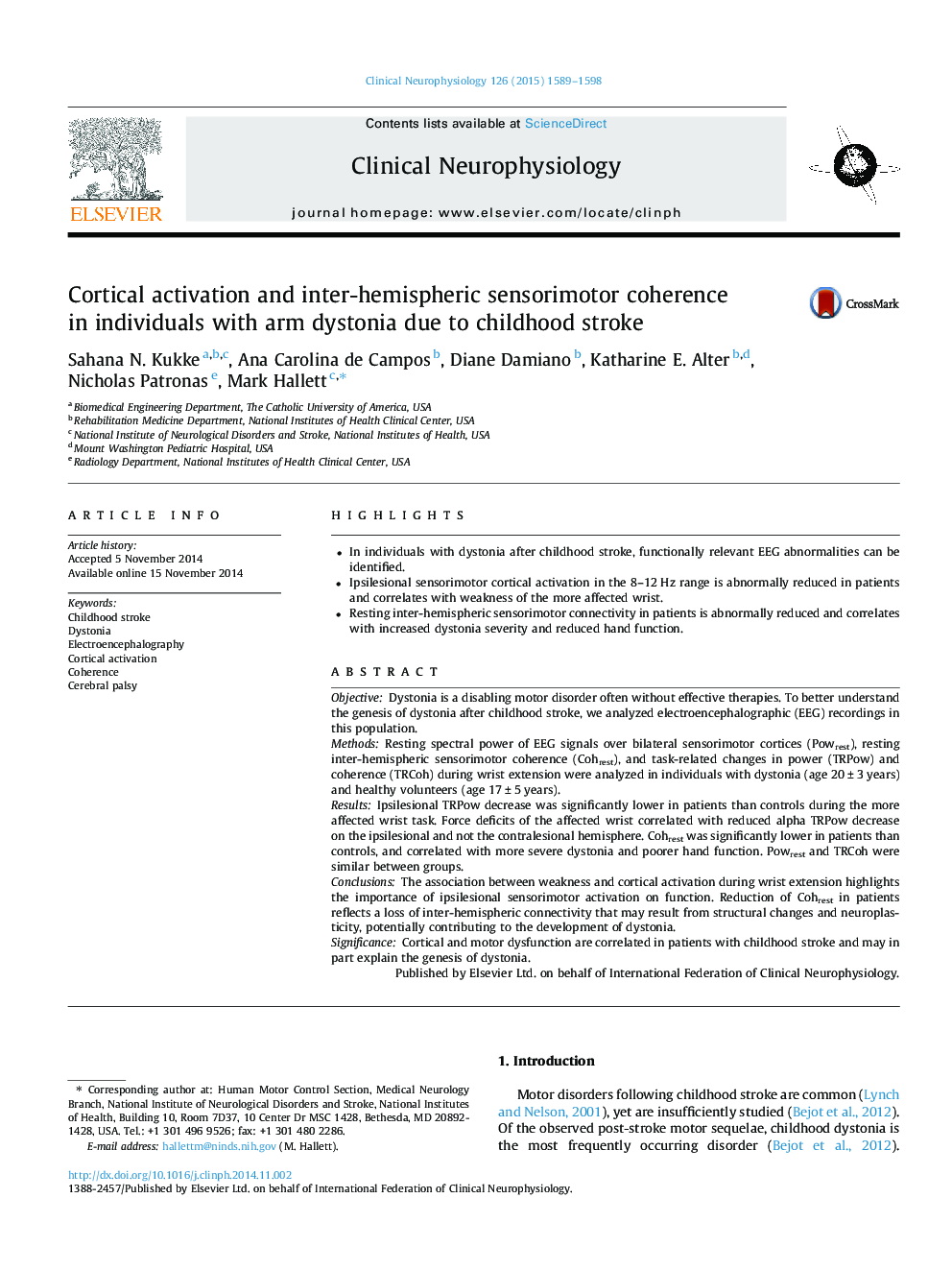| کد مقاله | کد نشریه | سال انتشار | مقاله انگلیسی | نسخه تمام متن |
|---|---|---|---|---|
| 3042560 | 1184954 | 2015 | 10 صفحه PDF | دانلود رایگان |
• In individuals with dystonia after childhood stroke, functionally relevant EEG abnormalities can be identified.
• Ipsilesional sensorimotor cortical activation in the 8–12 Hz range is abnormally reduced in patients and correlates with weakness of the more affected wrist.
• Resting inter-hemispheric sensorimotor connectivity in patients is abnormally reduced and correlates with increased dystonia severity and reduced hand function.
ObjectiveDystonia is a disabling motor disorder often without effective therapies. To better understand the genesis of dystonia after childhood stroke, we analyzed electroencephalographic (EEG) recordings in this population.MethodsResting spectral power of EEG signals over bilateral sensorimotor cortices (Powrest), resting inter-hemispheric sensorimotor coherence (Cohrest), and task-related changes in power (TRPow) and coherence (TRCoh) during wrist extension were analyzed in individuals with dystonia (age 20 ± 3 years) and healthy volunteers (age 17 ± 5 years).ResultsIpsilesional TRPow decrease was significantly lower in patients than controls during the more affected wrist task. Force deficits of the affected wrist correlated with reduced alpha TRPow decrease on the ipsilesional and not the contralesional hemisphere. Cohrest was significantly lower in patients than controls, and correlated with more severe dystonia and poorer hand function. Powrest and TRCoh were similar between groups.ConclusionsThe association between weakness and cortical activation during wrist extension highlights the importance of ipsilesional sensorimotor activation on function. Reduction of Cohrest in patients reflects a loss of inter-hemispheric connectivity that may result from structural changes and neuroplasticity, potentially contributing to the development of dystonia.SignificanceCortical and motor dysfunction are correlated in patients with childhood stroke and may in part explain the genesis of dystonia.
Journal: Clinical Neurophysiology - Volume 126, Issue 8, August 2015, Pages 1589–1598
